
In 2009, France was drafting a bill to ban women from wearing face-covering attire in public. Garments such as the niqab and burqa were included, prompting the Muslim community to voice its concern.
Ampannee Satoh, a Thai-Muslim artist who was studying in France at the time, was among those who took a stand. She took photographs of herself in front of the Eiffel Tower and other iconic sites, wearing a bright and colourful niqab that showed only her eyes. The pictures were exhibited publicly and were widely admired.
"I believe that the desire to wear something is a matter of individual right," Ms Ampannee said. "If we set aside religious matters and talk about basic humanity, everyone, as a human, has the right to have options and do what they desire as long as it doesn't cause negative consequences.
"We are living in a modern world where issues like this are supposed to have been abolished and where we should respect the beliefs of one another. I think it's not fair for a person to be ostracised simply because they wear something different."
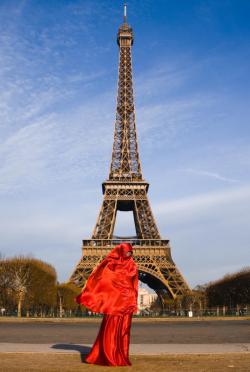
Her beautiful photographs touched the hearts of many Muslims, but the campaign against the ban ultimately failed and it took effect in 2010, with fines of 150 euros (6,040 baht) for violators. It followed an earlier prohibition passed in 2004 against the wearing of all conspicuous religious symbols in public schools -- Islamic veils, headscarves, turbans and hijabs included.
French authorities claimed that the purpose of the ban was to increase security. The law makes it illegal for anyone to cover their face in a public place. While it also covers balaclavas and hoods, it has been criticised as targeting Muslim women.
The ban was upheld last year by the European Court of Human Rights, which accepted Paris's argument that the law was based on "a certain idea of living together".
However, opponents argue that the ban reflects a lack of respect for humanity and encroaches on individual and religious freedoms.
The wearing of Muslim attire has been debated across the world. Even in Egypt where almost 95% of the people are Muslims, the issue of wearing a veil has been profoundly divisive.
Recently, the Egyptian government banned children from wearing hijabs, especially in primary school, arguing that Islamic teaching doesn't require girls to wear the hijab until they reach puberty. No specific age is specified.
However, passions run deep on both sides, and there was even a report of an Egyptian teacher who beat a girl and cut off a lock of her hair because she did not wear a hijab to class.

The Arabic word hijab refers to any modest clothing worn by women but it is most commonly associated with the headscarf. The niqab leaves only the eyes visible, while the Afghan-style burqa covers the entire body and face, with a grille across the eyes allowing a woman to see.
Many Islamic clerics say the Koran makes it obligatory for a female to cover her body, with only the face and hands visible, to protect her purity and deter harassment. Others say it reflects a patriarchal viewpoint that women represent temptation -- and thus keeping women covered up is necessary to protect men from giving in to their base instincts.
Whether a person covers all or part of her face depends on individual preference and practices that vary from country to country. Some academics argue, however, that the practice is rooted more in cultural traditions across different territories, and not based on theological belief.
"In the past, there were a lot of misunderstandings about wearing the hijab. Some thought it could only be worn after one joined the Hajj. Some said it was only for Muslims in the Middle East because it's dusty there. These beliefs arose because people didn't recognise the core values of Islam," says Abdullateef (Jamnong) Sukthaworn, director of the Muslim Volunteers Foundation in Thailand and a theology graduate who undertook nine years of religious studies at Al-Azhar University in Cairo.
Today, the trend is changing and more Muslim women are starting to wear the hijab and other kinds of Islamic attire. Mr Abdullateef believes it is a sign of a cleaner society where people are more tolerant and are embracing differences.
"The real Islamic teaching used to be very limited only to certain areas, but today society has opened up and people have more access to knowledge," he said. "The real core of Islamic principle is being taught widely as people who study the religion abroad start to come back and help to spread the core values of Islam.
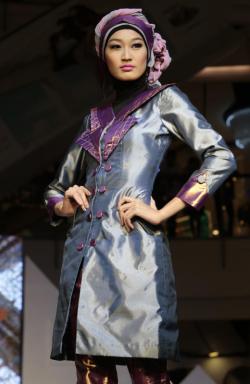
A model shows off an outfit during a Muslim Fashion Contest held at CentralWorld shopping centre in Bangkok in 2013.
"Especially in Thailand, there has been freedom for us Muslims to live peacefully. I can feel there is an obvious transformation, in a much better way."
Ms Ampannee agrees, saying the information and communication revolution has made the world smaller and exposed people to more knowledge about other cultures. "So we feel more comfortable doing what used to be a cultural taboo in the past."
"I've seen the change in society in the past seven years. When I was a student, only a few were spotted wearing hijabs in my university. Now it's up to 60-70%, and the trend is spreading among the younger generation."
Ms Ampannee herself did not wear a hijab before she went to France to study, but university regulations that discouraged the wearing of religious symbols moved her to challenge authority.
"I didn't feel any resistance from my peers. Nothing happened really. On the other hand, I made more friends from countries like Turkey when they knew I was a Muslim."
However, in many places in the Western world where Muslims are a minority, discrimination and Islamophobia are not uncommon. In London, a Muslim mother was attacked and had her hijab ripped off as she went to fetch her children from school.
The rise of Islamist terrorism over the past two decades has also heightened levels of fear and suspicion among some people, many of whom had long ago formed prejudicial views of anyone they saw as different from themselves. The sight of anyone wearing non-Western clothing could be enough to set off a panic about "fundamentalism" taking root in a community.
"In my view, global media are shaping certain negative perceptions toward Muslims," said Ms Ampannee. "I do care. But in the end, we know what we're doing and, as we understand the core purpose of Islam, we know our religion never teaches about any forms of violence.
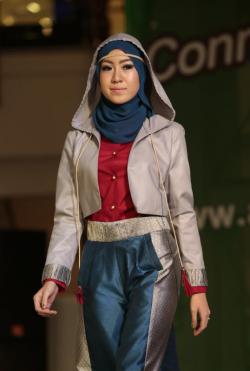
"When such severe, deadly attacks occur against Muslims, we don't really know if someone purposely wants to discredit or slander Islam. The media are injecting hatred into Islam, but the core value of Islam is to be comprehended, and not be orchestrated by the media."
In Southeast Asia, "a certain idea of living together" may seem different from the one the French espouse. Discrimination against Muslims is rare, with the possible exception of Myanmar. Most Muslim communities feel they are being treated with openness, acceptance and understanding, despite minor annoyances such as the prohibition against wearing hijabs to work or school.
"Islam has been an integral part of the landscape of Southeast Asia for a long time in our history. Muslims are not considered 'aliens' to the societies and countries of the region," says Dr Surin Pitsuwan, a former Asean secretary-general and a Muslim himself.
In Europe, on the other hand, Muslims only started arriving in the last century or so after their home countries were colonised by European powers. Many came from places such as Turkey and North Africa for economic reasons, and as long as economic conditions were good in their new homelands, there were few problems.
However, as conflict and violence in the Middle East intensified, the waves of immigration grew. And as economic conditions worsened in Europe, native Europeans started to point the finger at immigrants in general, most of whom happened to be Muslim, for taking their jobs and causing other social problems.
"The case is different with Southeast Asia," said Dr Surin. "Very few Muslims migrated to this region as a result of conflicts at home. Natives of the region have not felt alienated in their own societies and homelands. Their practices and rituals are not considered 'foreign' or objectionable."
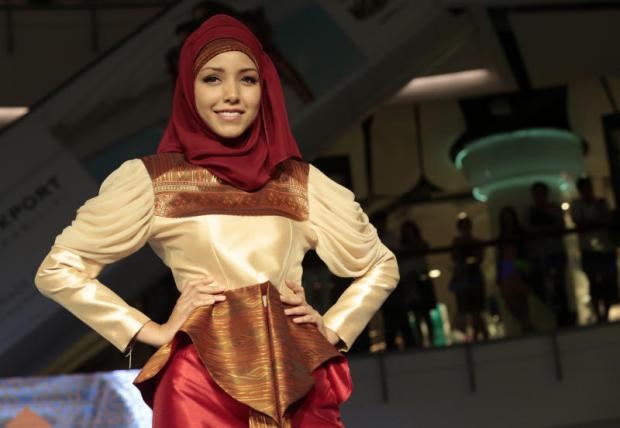
RISE OF THE 'HIJABSTERS'
Southeast Asia is home to more than 240 million Muslims, accounting for about 40% of the
combined population of the 10 Asean member
states. Indonesia has the largest Muslim population,with 12.7% of the world's Muslims.
For many female Muslims in the region, wearing the hijab is normal practice but for some it has become a fashion statement, giving rise to a vibrant new fashion industry based on creating clothing that is modest and stylish at the same time.
Indeed, the rise of the "hijabsters", a term coined by The Financial Times, has been a cultural phenomenon, especially in Indonesia and Malaysia. A hijabster favours bright, colourful attire that is still Islamic, and isn't afraid to set it off with copious make-up and high heels.
Under Indonesian national and regional laws, female head-coverings are entirely optional. According to estimates by Asean Confidential, a Financial Times research service, about 10% of the female population in Indonesia wear the hijab.
The hijabsters are typically better educated than the average Indonesian woman. More than 50% of hijab-wearing women in their twenties are university graduates, according to Asean Confidential, compared with just 7.5% of the total female population.
The report goes on to say that hijabsters tend to be middle-income earners. They are typically smartphone owners and heavy users of social media, spreading fashion trends via Facebook and Instagram.
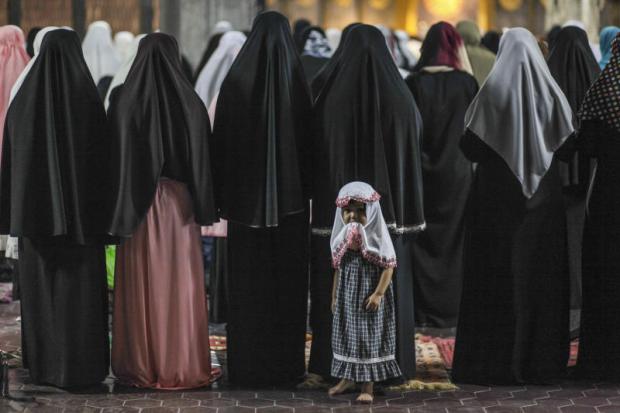
Muslim women attend a religious rite at the central mosque in Khlongton in Bangkok.
Apart from this they are heavy users of halal skincare and cosmetics products. Halal products are free from alcohol, pork-related substances and animal testing, and currently represent 10-20% of the Indonesian consumer market, the FT reports, citing the global media company Ogilvy & Mather.
In Malaysia, wearing the hijab is not enforced except when participating in religious ceremonies, though proportionally more Malaysian women wear the hijab than their Indonesian peers. In Thailand, many young Muslim women have tapped into the hijabster trend as fashion taste shifts from the plain black abaya, a cloak or robe-like dress, to a more colourful headscarf combined with regular casual attire.
Sudawan Abdulsalam, the owner of the Ruslan Center Muslim clothing shop in Bangkok's Min Buri district, says brightly coloured hijabs are rapidly gaining popularity among her customers. She's been running the shop for eight years and admits it has taken some time for her products to find a market locally.
"This year, I feel there is more Islamic clothing being produced in Thailand," she said. "The quality of Thai products matches and is at par, or even a higher grade, than those exported from Indonesia or Malaysia."
However, made-in-Thailand products are still more expensive, so the bulk of her stock is imported as she doesn't want to be stuck with a big inventory. She sources quality hijabs from Saudi Arabia, Turkey, Jordan, Malaysia and Indonesia, and there is rising competition from Chinese producers offering cheaper options. Hijab prices range from 50 baht for a Chinese product to 2,000 baht, or even 10,000 baht, depending on the material used.
Ms Ampannee says it's a good sign to see more women wearing the hijab, but complains that some women are doing so in a way that disrespects religious tradition, such as pairing a hijab with a short-sleeved blouse.
"Some don't have a profound understanding about the true history and purpose of the covering," she said. "The fact that they wear it in their own way has been influenced by the culture and tradition that are commonly practised in that area."
Muslim attire, she points out, has been created to maintain the concept of politeness and decorum, so it should come in polite colours and not be too bright.
"Many Muslims tend to neglect the religious purpose of wearing a hijab," she said. "The practice has become more of a culture and tradition and people perceive that it's right, but it truly needs a more comprehensive understanding.
"The intention to wear the hijab comes from the faith that we have in our hearts. We aren't doing anything wrong."